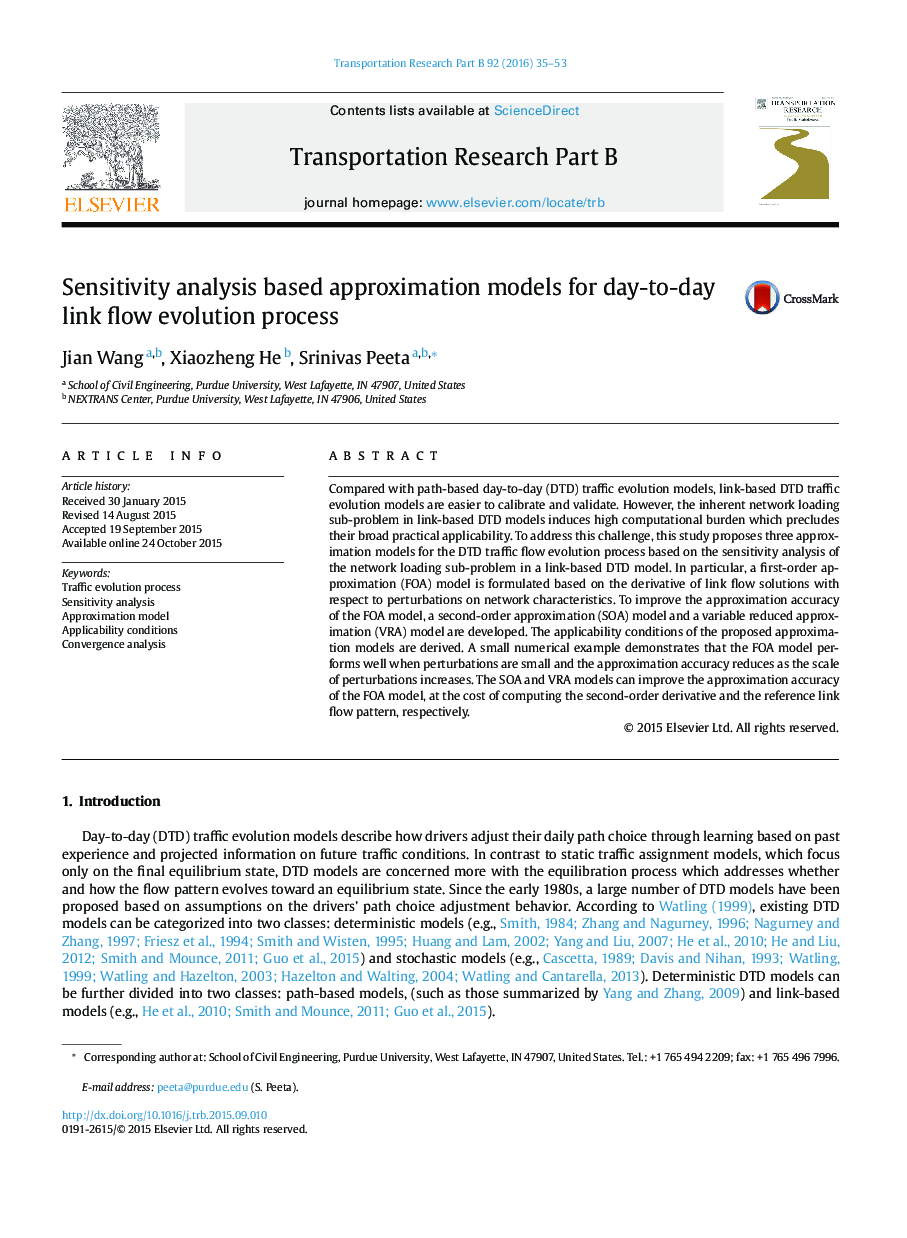| Article ID | Journal | Published Year | Pages | File Type |
|---|---|---|---|---|
| 5127212 | Transportation Research Part B: Methodological | 2016 | 19 Pages |
â¢Develop three approximation models for the day-to-day link flow evolution process.â¢Circumvent the computationally expensive network loading sub-problem.â¢Provide simple formulation to facilitate the quick assessment of link flows.â¢Derive the necessary conditions for the applicability of the proposed models.
Compared with path-based day-to-day (DTD) traffic evolution models, link-based DTD traffic evolution models are easier to calibrate and validate. However, the inherent network loading sub-problem in link-based DTD models induces high computational burden which precludes their broad practical applicability. To address this challenge, this study proposes three approximation models for the DTD traffic flow evolution process based on the sensitivity analysis of the network loading sub-problem in a link-based DTD model. In particular, a first-order approximation (FOA) model is formulated based on the derivative of link flow solutions with respect to perturbations on network characteristics. To improve the approximation accuracy of the FOA model, a second-order approximation (SOA) model and a variable reduced approximation (VRA) model are developed. The applicability conditions of the proposed approximation models are derived. A small numerical example demonstrates that the FOA model performs well when perturbations are small and the approximation accuracy reduces as the scale of perturbations increases. The SOA and VRA models can improve the approximation accuracy of the FOA model, at the cost of computing the second-order derivative and the reference link flow pattern, respectively.
